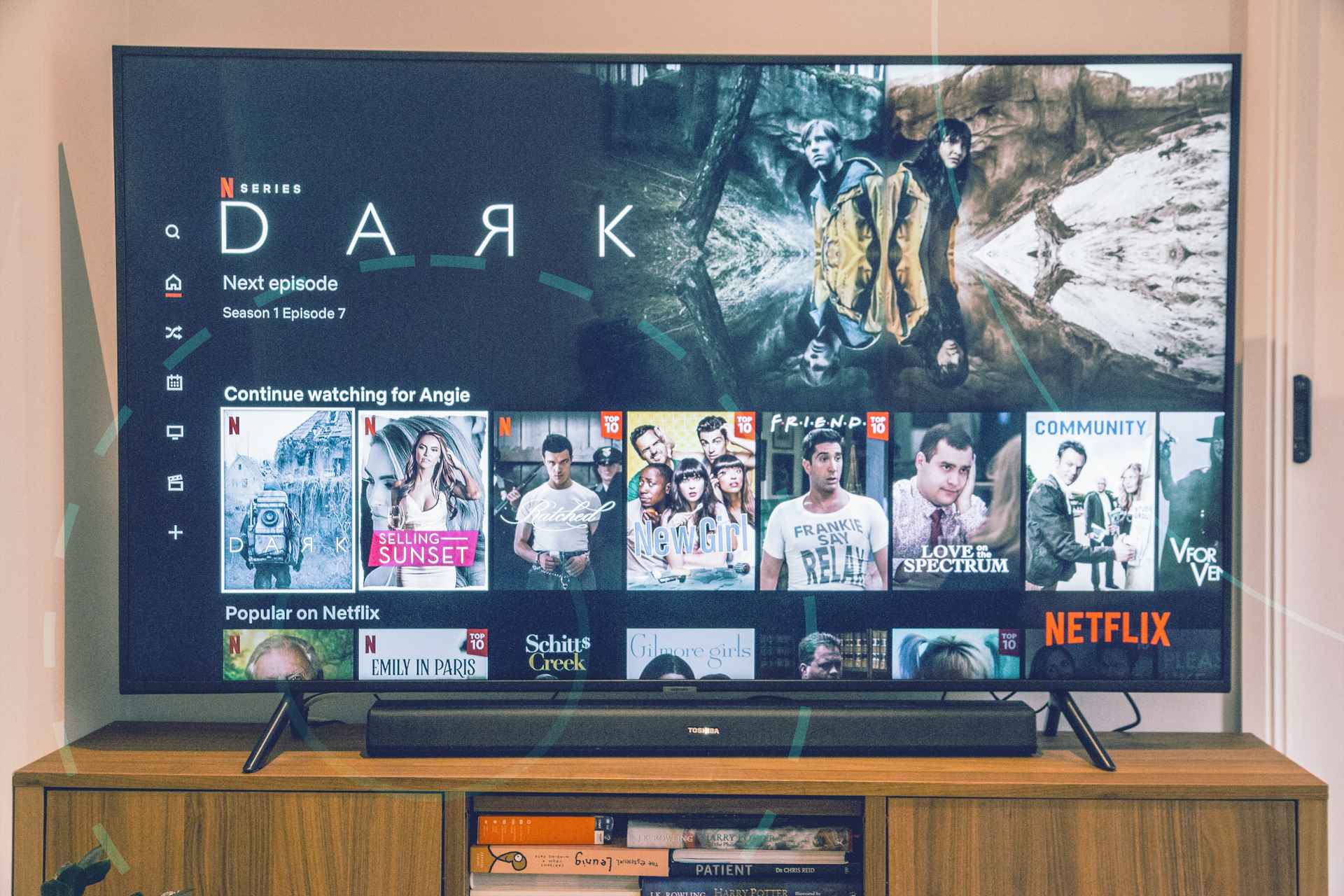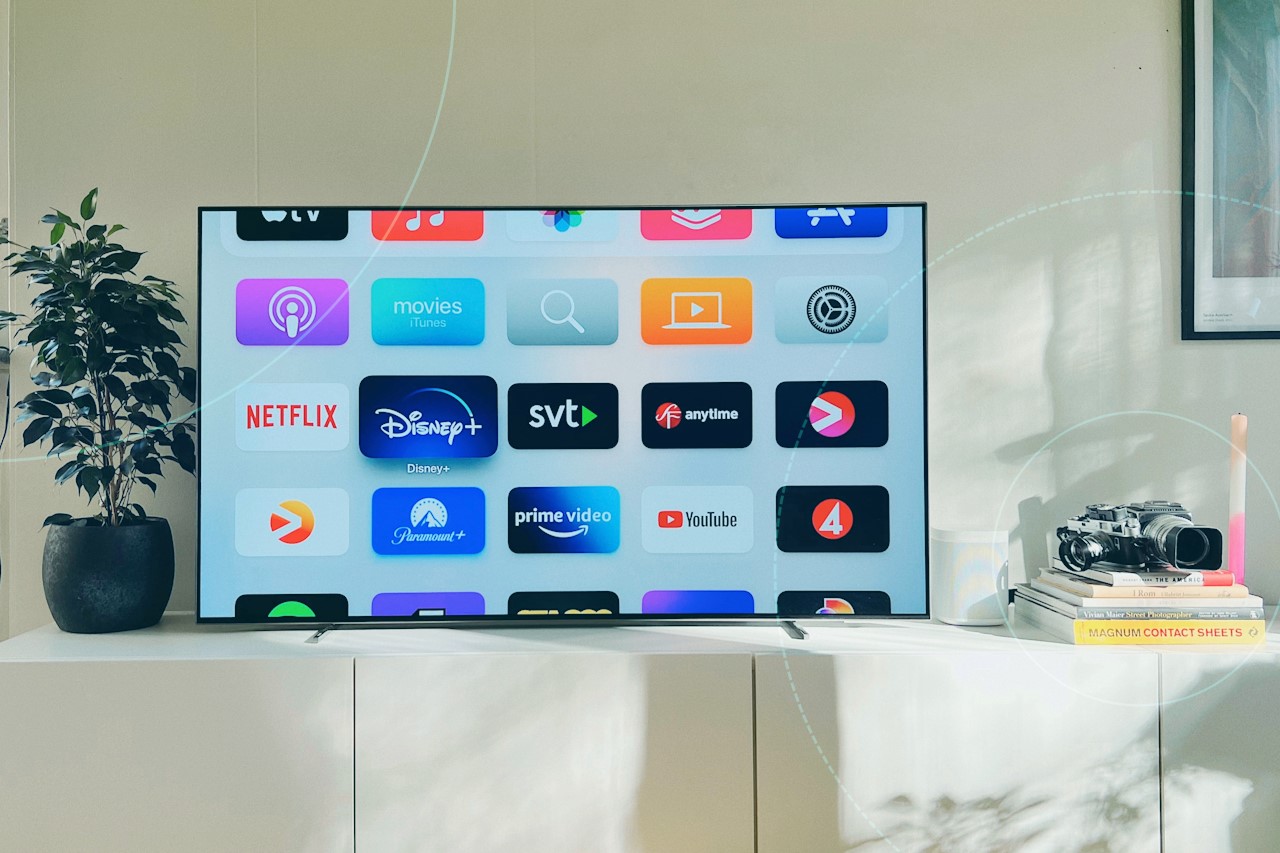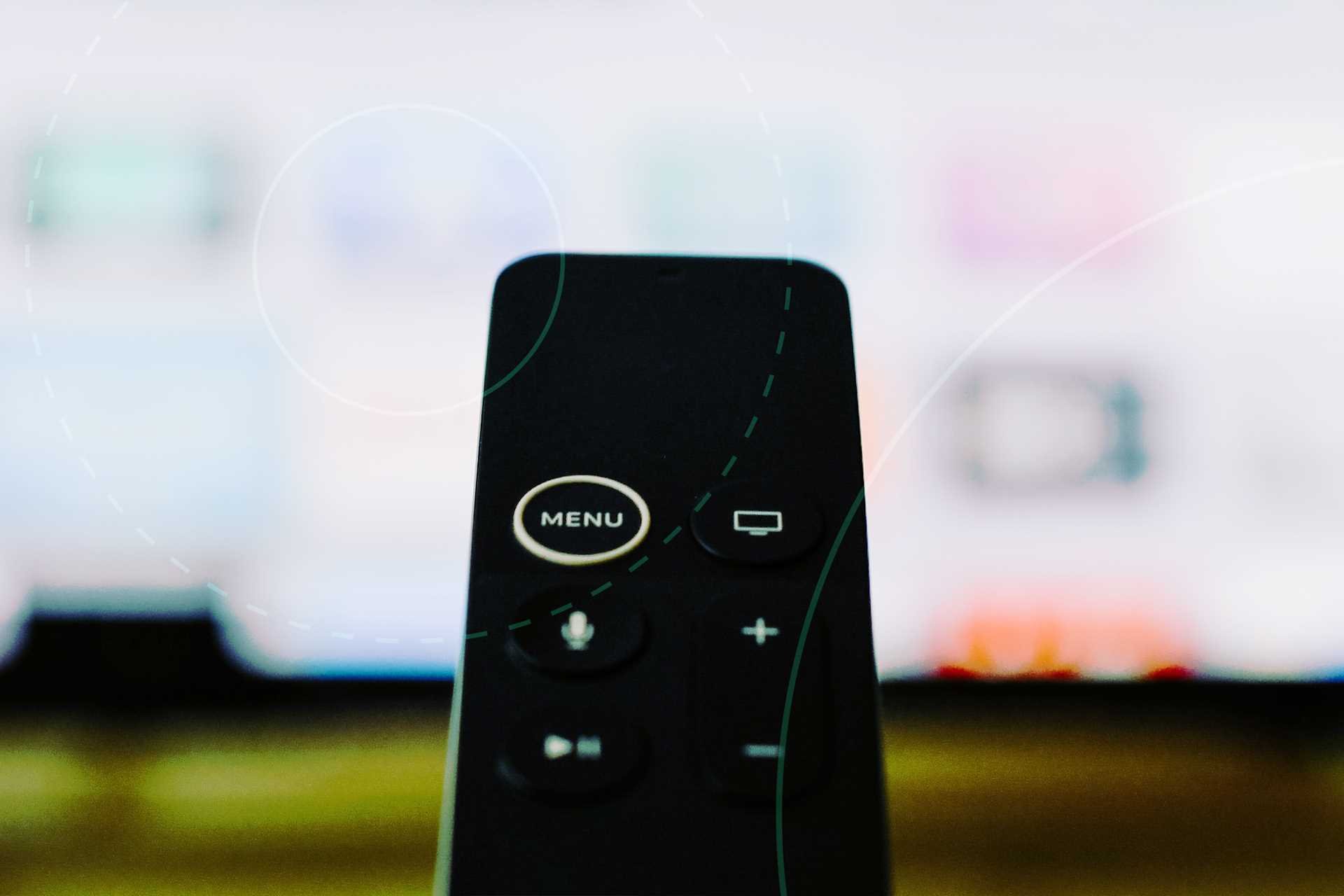Learn how streaming TV advertising’s low barrier to entry and powerful performance metrics make it invaluable to modern marketers.
Everything you need to know to start advertising on connected TV
TV advertising is in flux. Customers are increasingly leaving linear TV behind even as the price of advertising hits astronomical highs. That breakdown between audience and cost-effectiveness has led many marketers to turn to streaming TV advertising, where they benefit from more precise targeting, impressive conversion rates, and greater performance insight. If your business is considering streaming TV ads, this guide will help you navigate the market and get the most out of your investment.
Leading Streaming Platforms
CTV vs OTT
Connected television (CTV) refers to the physical device that delivers video content to users, such as a Roku or Apple TV. It can also refer to the video content itself, so long as that content plays on a TV. Over-the-top (OTT), on the other hand, is an umbrella term that refers to video content delivered over the internet to any device, from tablet to TV. For example, OTT could refer to a YouTube video played on a mobile phone or to a movie delivered via Netflix to an Amazon Fire Stick, but only the latter would also be an example of CTV.
All of the following companies provide OTT content, and many also deliver CTV content.
Netflix
Arguably the original home video disruptor, Netflix's pivot from mail-order DVD rental to online streaming paved the way for the modern media era. It delivers a wide array of house-made or distributed on-demand content from Wednesday to Stranger Things. That content serves nearly 231 million paid subscribers worldwide, generating $7.85 billion in Q4 2022. Netflix currently offers both ad-free and ad-supported subscriptions, and almost a million users in the US have signed up for the latter since its rollout in November 2022.
Hulu
Majority-owned by Disney as of 2019, Hulu offers both on-demand and live content via ad-free and ad-supported subscriptions. Subscribers can also add on additional streaming services, such as Disney+ and ESPN+, right through the app. As an added bonus for marketers, live TV content may include ads even if the subscription tier removes ads for on-demand content. Around 48 million people subscribe as of January 2023, generating annual revenue of $10.7 billion in 2022.
HBO Max
Launched in May 2020 as HBO consolidated its streaming offerings, HBO Max's library includes Warner Bros. TV shows and films, third-party content from major film producers, streaming-exclusive originals, and, when it relaunches as Max in 2023, will see a flood of new Discovery-made reality programming. That content can be seen ad-free or ad-supported according to customer subscription tier. Warner Bros. Discovery reported a combined 96.1 million subscribers across HBO, HBO Max, and Discovery+ in Q4 2022. The company's DTC division, which includes HBO Max, generated $2.45 billion according to that same report.
YouTube TV
After years as the dominant online video-sharing platform, YouTube expanded to include linear TV programming with YouTube TV in April 2017. It offers live programming and on-demand content from major networks such as ABC and NBC, cable networks such as BBC America and Cartoon Network, and sports and movies courtesy of NBA TV and Starz. YouTube TV had a combined 5 million subscribers across its paid and trial options in July 2022. Google, which owns YouTube and YouTube TV, groups its revenue in with YouTube itself, Google Play, and other offerings under the Google Services banner. The division as a whole reported $67.8 billion in revenue in Q4 2022.
Sling TV
DISH Network launched Sling TV in February 2015 to target 18-to-35-year-old cord cutters that still want an experience that approximates linear TV. The service partners with networks such as ESPN, TNT, CNN, and more to provide live and on-demand content, all of which is supported by ads. That content is spread across two packages, and customers can subscribe to one or both packages in addition to smaller add-on bundles ad hoc. Sling TV reported 2.3 million subscribers as of 2023, and although DISH Network doesn't disclose Sling's revenue in isolation, the whole company's revenue hit $16.68 billion in Q4 2022.
Not sure which platform's users and philosophy fits you best? Check out our free guide, The CTV Advertising Playbook for tips and strategies to take advantage of connected television services.
For more examples of OTT leaders, read 11 OTT Streaming Platforms Marketers Need to Know in 2023.
What Are Free Ad-Supported TV (FAST) Services?
Free ad-supported TV services (or FAST services) provide customers a more affordable way to watch TV via streaming. These no-cost streaming platforms broadcast licensed, original, on-demand, and live content, such as news and sports, all supported by ads. There are no pricing tiers — the service stays free no matter what.
That's part of why free, ad-supported TV is the fastest-growing tier in streaming. Customers tire of spending for different subscriptions, and FAST services have very low barriers to entry. They don't require a credit card, and some don't even need the viewer to make an account. The experience is also familiar for viewers used to linear television and incorporates classic shows and content aimed at children, which makes it appealing to families.
Performance Marketing With FAST Services
FAST services provide performance marketers with significant benefits because they are equipped for precise targeting and measurement. They're also scheduled programmatically, cutting out the tedious network contract negotiation process and allowing nimble campaign pivots. Marketing via FAST services provides these benefits:
- A more diverse audience than subscription video on demand (SVOD)
- More engaged viewers as measured by video completion rate
- Transparent information on the customer's journey from ad to conversion
- Precise ad targeting down to specific devices and households
- Easily measured ROAS for campaign performance evaluation
Leaders in FAST Services
- The Roku Channel is a live and on-demand video library created by OTT device manufacturer Roku. Original and licensed content includes news, classic TV, feature films, and children's programming. Roku reported 70 million active accounts in January 2022 and a 33% market share in the OTT economy, making it the most popular FAST service.
- In second place is Fox's Tubi, with 64 million active users. It sports a wide array of domestic and foreign films in its catalog, plus live TV streaming.
- Paramount's Pluto TV sports the highest number of monthly active users at 79 million by 2022's close. However, its content offerings are more limited than some of its competitors.
How Much Does a Commercial Cost?
The cost of a commercial can vary widely, from $1,000 to more than $10 million. Factors such as intended market, campaign size, and intended channels can influence the overall cost, but expenses generally break down into production and placement.
Production Costs
A professional-quality commercial doesn't have to be expensive, but the vast range of possible costs can achieve very different results.
- For less than $1,000, you can expect to incorporate stock footage, a non-celebrity narrator, and limited post-production. That means little more than your logo and some text on-screen.
- Spending between $1,000 and $50,000 will likely mean shooting original footage, working with local talent, and bringing in motion graphics to raise the level of polish on the product.
- Pushing past $50,000 and up to as much as $1 million will often afford you stunning original footage, high-quality union talent, editing that makes the spot appropriate for multiple broadcast lengths, and special effects.
- If you plan to spend over $1 million on a single ad, you're likely working with celebrity actors or directors, cutting-edge special effects or animation, and more.
Placement Costs
Production is only half the battle. Next, you'll have to decide on which medium to place your ad. Linear TV prices are affected by market size and timing.
- Local TV, which serves small to medium markets, will typically have a cost per mille (CPM) of between $5 and $50, meaning you'll have to spend that much per thousand viewers.
- National TV has an average cost of $350,000, with higher prices during peak hours and lower in the early morning. Prices then soar during special events such as the Super Bowl, during which the average price for a spot was $6 million in 2023.
- Over-the-top or OTT ads run on ad-supported streaming services such as Hulu, YouTube, and Sling TV. These companies don't share their rates publicly, but advertisers who have worked with them and other OTT providers say the average CPM is in the neighborhood of $32.
To learn more about the cost of CTV advertising, read How Much Does a Commercial Cost? Getting Creative in the CTV Era.
3 Connected TV Ads That Nail the Formula
Targeting: Fiverr's Small Business Stories
Fiverr's Transformation Stories campaign highlights several small businesses that used its services to thrive even in challenging economic conditions. The spots tell compelling, emotional stories quickly without sacrificing the connection between Fiverr's work and the businesses on display.
The ads are also highly specific, making it clear that small business owners are Fiverr’s ideal customers. Where linear TV ads must appeal to wide and varied audiences according to channel demographics, CTV ads can target specific audiences using household and device identifiers. Fiverr takes full advantage of those targeting capabilities with this series.
Memorability: Enbridge Struts Across the Screen
Getting attention is easy, but keeping it is trickier. The best streaming TV ads incorporate humor, gorgeous imagery, emotional narratives, and other strategies to hook viewers, staying with them even after they've returned to the show they were watching.
That's exactly what Enbridge did with its "Tomorrow is on" commercial. The spot follows a rooster as he travels from countryside to city and back again one morning. As he does, the lights, heating, and more that Enbridge powers turn on. People all around react with awe and confusion, creating a unique and humorous ad that viewers will remember.
Interactivity: Volvo Drives Engagement
CTV ads allow users to interact with them, deepening the connection between viewer and ad. Combining the production values of traditional commercials with the interactivity afforded by CTV ads, Volvo produced a classic car commercial — luxurious shots of the XC90's interior, stately text over stunning vistas — while instructing viewers to learn more about the XC90 at the push of a button on their remotes. The ad also gave viewers the option of inputting their phone numbers to receive additional info, though the prominence of QR codes has made this process more seamless.
Getting results from streaming TV advertising is simple, but those results can improve significantly by incorporating knowledge and finesse. If you're curious about maximizing your CTV ad ROI, read our free guide to CTV advertising for search and social marketers.
To learn about more CTV ad success stories, read 5 Iconic Connected TV Ads We Love.
MVPD vs. VMVPD: What Marketers Should Know
When exploring options for TV advertising, you’re likely to see the acronyms MVPD and VMVPD. Multichannel video programming distributors (MVPDs) are video content delivery services that offer customers packages of channels they can access typically through cable, fiber, or satellite connections. MVPDs give access to live broadcast channels, or linear TV, but also often include on-demand options. Examples include Comcast Xfinity, DirectTV, and Verizon FiOS.
Virtual multichannel video programming distributors (VMVPDS) diverge by delivering content through streaming via over-the-top (OTT) devices such as phones, tablets, and connected TVs. These distributors also differ from subscription video on demand (SVOD) by offering both on-demand and live TV content. Popular providers include Sling TV, FuboTV, Hulu with Live TV, and YouTube TV.
Each MVPD offers customers different content packages at different prices, but customers frequently have to buy into year-long or multi-year contracts that incur extra fees upon premature cancellation. VMVPD customers, meanwhile, can buy smaller, less expensive content bundles, add additional channels a la carte later on, and rarely sign contracts.
Where Should I Market?
MVPDs excel at reaching a broad, slightly older audience but offer limited ability to track ad performance during a campaign. Advertising on these services requires direct deals with the networks and is often very expensive. That, combined with their lack of targeting, makes them best-suited for larger companies and legacy advertisers conducting awareness campaigns.
VMVPDs, on the other hand, rely on more affordable private marketplaces (PMPs) to purchase and deliver ads. They also provide powerful performance marketing tools that allow for fine-grain A/B testing, targeting, and tracking of the buyer's journey across devices. These features make streaming TV advertising an exciting option for smaller businesses and start-ups.
To learn more about the differences, pros, and cons of the two forms of video programming distributors, read What is MVPD and How is it Different From VMVPD?
Getting Started in Streaming TV Advertising
Although every business has unique advertising needs, all could benefit from the guidance of an experienced partner. tvScientific makes it easy to begin a CTV ad campaign that fits your company, regardless of the size, through rigorous creative testing, streamlined media buying, and exacting performance measurement. Set up a demo today to learn how we can help you build your customer base.







